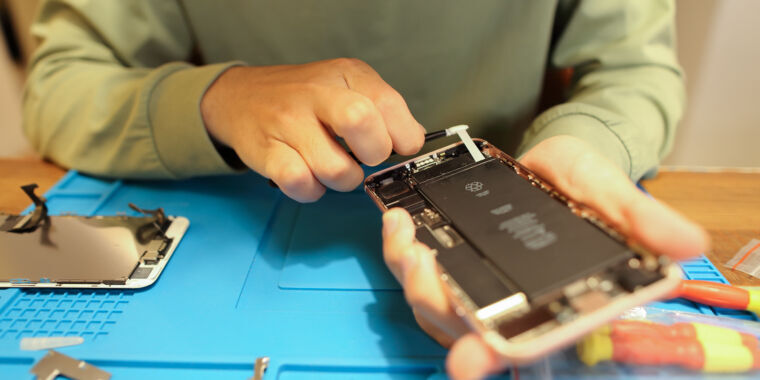cross-posted from: https://sh.itjust.works/post/15735868
Bill SB 1596 passed Oregon’s House by a 42 to 13 margin. Gov. Tina Kotek has five days to sign the bill into law
Like bills passed in New York, California, and Minnesota, Oregon’s bill requires companies to offer the same parts, tools, and documentation to individual and independent repair shops that are already offered to authorized repair technicians.
Unlike other states’ bills, however, Oregon’s bill doesn’t demand a set number of years after device manufacture for such repair implements to be produced. That suggests companies could effectively close their repair channels entirely rather than comply with the new requirements. California’s bill mandated seven years of availability.



This is the best summary I could come up with:
Oregon’s bill stands out for a provision that would prevent companies from requiring that official parts be unlocked with encrypted software checks before they will fully function.
If signed, the law’s requirements for parts, tools, and documentation would apply to devices sold after 2015, except for phones, which are covered after July 2021.
Like other repair bills, a number of device categories are exempted, including video game consoles, HVAC and medical gear, solar systems, vehicles, and, very specifically, “Electric toothbrushes.”
John Perry, a senior manager for secure design at Apple, testified at an Oregon hearing that the pairing restriction would “undermine the security, safety, and privacy of Oregonians by forcing device manufacturers to allow the use of parts of unknown origin in consumer devices.”
Perry also noted Apple’s improved repair workflow, which no longer requires online access or a phone call to pair parts.
Apple devices will still issue notifications and warnings if an unauthorized screen or battery, for example, is installed in an iPhone.
The original article contains 425 words, the summary contains 165 words. Saved 61%. I’m a bot and I’m open source!